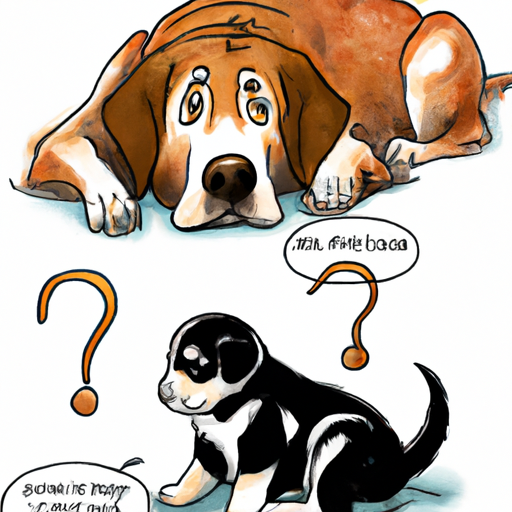Introduction
You’ve just welcomed a new furry friend into your home. That adorable bundle of joy, with its playful nature, boundless energy, and endearing innocence. But, as you watch your pup frolic around, a question forms in your mind: “how long are dogs considered puppies?” Understanding this is important as it impacts the care you give to your pet.
Understanding a Dog’s Life Stages
Like humans, dogs go through distinct life stages: puppyhood, adolescence, adulthood, and senior years. Each stage comes with its unique behaviors and needs.
- Puppyhood: This stage lasts until the dog reaches physical maturity.
- Adolescence: In this stage, dogs reach sexual maturity but may still display puppy-like behavior.
- Adulthood: A dog’s personality and behavior stabilize.
- Senior: Dogs start showing signs of aging.
Puppyhood Duration by Size and Breed
The length of a dog’s puppyhood can vary significantly depending on the breed and size of the dog.
- Small Breeds: These dogs generally mature more quickly. They’re considered puppies until around one year of age.
- Medium Breeds: These dogs take a bit longer to mature, usually around 12-16 months.
- Large Breeds: Large breed dogs may take up to two years to fully mature.
| Breed Size | Puppyhood Duration |
|---|---|
| Small | 1 year |
| Medium | 12-16 months |
| Large | Up to 2 years |
The Importance of Recognizing Puppyhood
Recognizing the length of your dog’s puppyhood is essential for several reasons:
- Diet: Puppies require different nutrient levels than adult dogs.
- Training: Puppyhood is the ideal time to establish good behavior.
- Socialization: Early exposure to various environments can shape your dog’s future personality.
- Health care: Puppies require different vaccination and deworming schedules.
Transitioning from Puppyhood to Adulthood
As your puppy grows, you’ll need to gradually transition them to adult doghood. Here are some steps to help you:
- Change their diet gradually: Transition to adult dog food over a week, gradually increasing the ratio of adult to puppy food.
- Adjust their exercise routine: Adult dogs need more exercise than puppies.
- Modify their training: Adult dogs can handle more complex commands and longer training sessions.
- Revise their health care plan: Adult dogs have different vaccination and deworming schedules.
Signs your Puppy is Becoming an Adult
How do you know when your puppy is transitioning into adulthood? Here are some signs:
- Physical growth: Their growth slows down or stops.
- Teeth: They lose their puppy teeth and get their adult set.
- Behavioral changes: They might become less hyperactive and more independent.
Frequently Asked Questions
Q: When do puppies stop growing?
A: This varies depending on the breed and size of the dog. Small breeds usually stop growing around 10-12 months, medium breeds at 12-16 months, and large breeds can continue to grow until they are 2 years old.
Q: How can I tell if my dog is still a puppy?
A: Physical signs like size and teeth can indicate if your dog is still a puppy. Behavioral signs, such as high energy levels and curiosity, can also suggest they’re still in their puppy stage.
Q: When should I switch my puppy to adult dog food?
A: Generally, puppies should be switched to adult dog food when they reach 90% of their expected adult size. This can be anywhere from 9 months to 2 years, depending on the dog’s breed and size.
Q: How does a puppy’s behavior change as they mature?
A: As puppies mature, they tend to become less hyperactive and more independent. Their interest in exploration and play might decrease, and they may start showing more territorial behavior.
In conclusion, the length of a dog’s puppyhood varies by breed and size. Recognizing when your puppy becomes an adult can help you provide the best care for your furry friend at each stage of their life. Remember, every dog is unique, and these guidelines can vary. Always consult with a veterinarian for the most accurate information.



